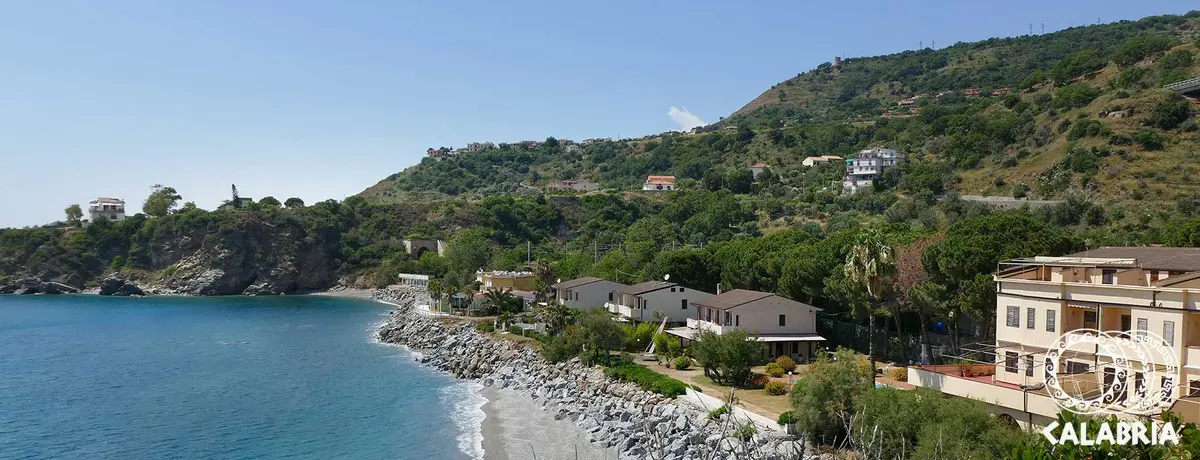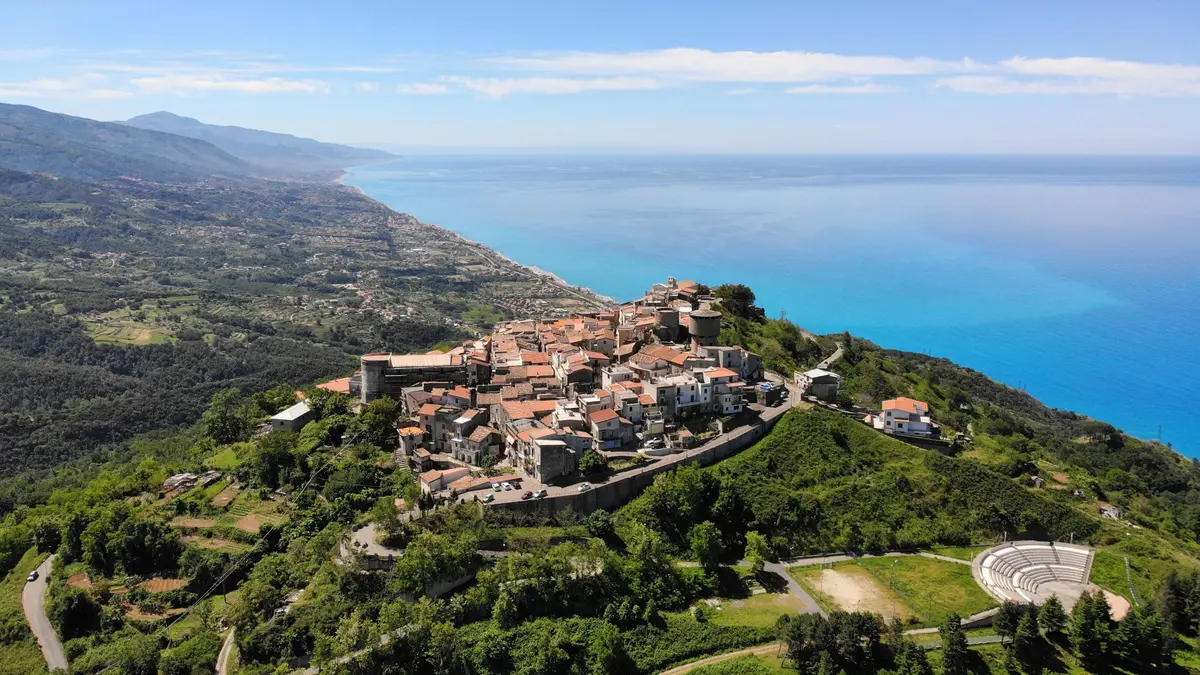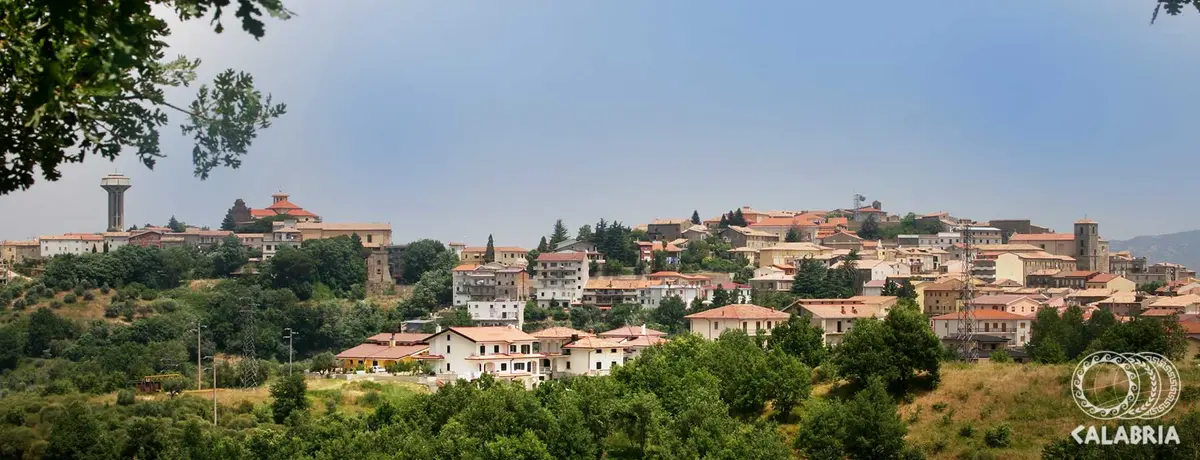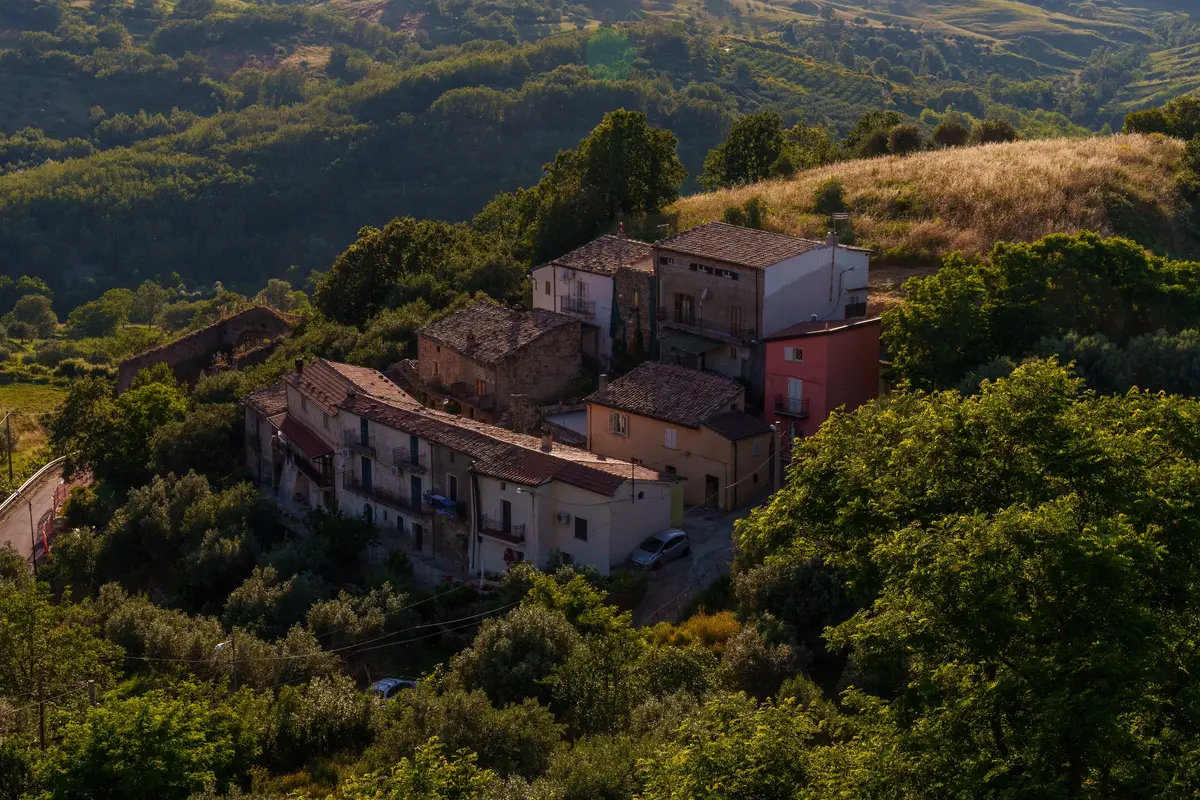Fagnana Castello
Fagnana Castello, the town of chestnuts
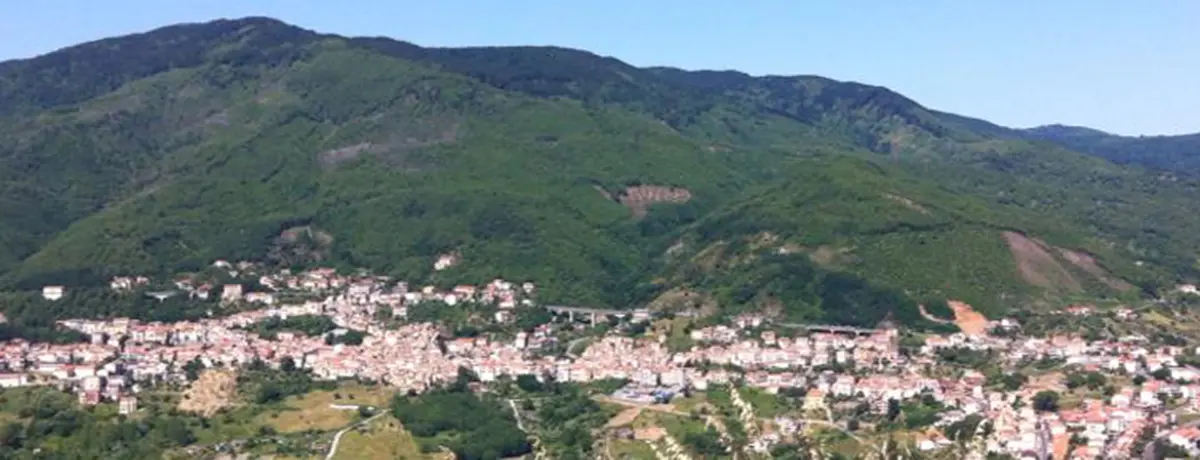
Town
The town of Fagnano Castello, perched on the Coastal range facing the Tyrrhenian sea, is surrounded by forests. It is renowned for the quality of its sea water and natural beauty and landscapes.
Once a year, Fagnano Castello celebrates the chestnut with three days of happiness; bringing back the atmosphere and flavours of its past.
Church of the Immaculate Conception
The exact date of when the Chiesa dell’Immacolata (Church of the Immaculate Conception) was built is unknown, but it features a façade in the Neoclassical style and has a bell tower on the right-hand side. On the sides of the portal, a series of pilasters can be seen with capitals in the Corinthian style. On top, there is large window that houses a mosaic with the image of the Immaculate Conception. The interior has three naves divided by rectangular pillars connected by round arches, of which the central one is covered by a barrel vault with frescoes by an anonymous painter of the XVIII century. The naves end in three apses of circular shape with a dome-shaped vault. Included among the works present is: a baptismal font with stone base of 1627 (with a carved date) and a pulpit of chestnut wood of the XIX century. Lastly, the church also preserves the statue of St Sebastian, patron of Fagnano.
Church of St Peter
Probably built at the beginning of the XV century, the main façade has a portal framed by an elliptical arch surmounted by a rose window. At the sides of the façade two tall pilasters govern two frames, one of which clearly displays ornamental elements. At the top is the gable decorated with relief sculpture, which features the statue of St Michael the archangel created by Camillo Capolupo; also author of the Madonnina in cement which stands out on the church’s outer side wall. On the right is the bell-tower, characterised by an arch-shaped opening with the balustrade that resumes the decoration of the rose window. The interior of the church is richly decorated with Baroque style stucco-work. The wall of the main altar, which features the reliquary that houses the statue of the Virgin of the Rosary, is also richly decorated with ornamental patterns. Originally, the church allowed access to the palazzo Iacovini by means of a wrought iron grate, which allowed family members to follow religious services from a distance.
Church of St Nicholas of Bari
In the hamlet of S.Lauro is the church of San Nicola di Bari; it has a single nave, an essential façade and attached bell-tower. Inside, it houses numerous statues, including St Nicholas and St Francis of Paola.
Convent of St Sebastian
Today the headquarters of the Town Hall, this convent was founded by Franciscan monks of the Third Order in 1545. The building has a square shape and stands on two floors. On the eastern side, formerly there was a church that had a wooden portal with the image of St Sebastian carved above.
The monastery was suppressed in 1809 and since then, the building has hosted several institutions.
Sculpture
There are several works created by the students of the Scuola d'Arte Barone (Art School Barone) arranged on the town walls or in the most charming corners. In fact, when strolling through the town streets, the following can be seen: a round sculpture in cement depicting St Francis of Paola deep in prayer, a Madonnina in a votive shrine, a Madonna with Child and a large Christ on the Cross by the sculptor Fiore Pavone.
Murals
Fagnano's town centre offers two alternative routes embellished by some beautiful murals. The first route includes some moments of daily life of Fagnano’s citizens (harvesting of chestnuts and their transport on a donkey, women with bundles on their head); while the second route, brings back to life the ancient trades: the “siggiari” (chairmakers), “u mmastaru” (pack-saddlers), “carivunari”(the coalmen), weavers and knitters of the broom plant.
Festival of the Chestnut
The chestnut tree is typical of the woods half-way up the mountain. In the past, it was a valuable resource as a whole, due to the wood needed for making furniture, tools and as construction material; twigs and thinner branches were used for heating the house, stove and oven; the leaves were used for compost from manure and bedding for animals; its flowers are still very important for bees, which are able to give us a very aromatic, bitter and even, aphrodisiac honey; its fruit had the most varied uses in the kitchen. Finally, tannins were obtained from wood and hedgehogs which were essential for tanning hides. On the last weekend of October, Fagnano Castello celebrates the chestnut with three days of happiness, bringing back the atmosphere and flavours of its past, linked to the local agricultural tradition. During the days of the festivities, guided tours take place in the old town centre, at the Cooperative of chestnuts and local farms offer tasting experiences of typical products; while conferences and debates take place on a theme; in addition, there is a permanent display of typical products and local handicrafts in the alleys of the old town centre. Of course, it is possible to taste specialities based on chestnuts such as sweets and roast chestnuts (distributed free of charge) and all the typical products of this land. During the evenings, there is entertainment with re-enactments of the old crafts.
Ancient Crafts
Fagnano has maintained strong handicraft traditions. In fact, even today, its economy is well represented by this sector that continues to forge skills and creativity. The village still retains a small production of straw chairs that was thriving until the 1940s. After the Second World War, the general technological progress and advances in time resulted in the decline of handicrafts. Chairs were built in beech wood ("ì fàgu") and stuffed with cattail ("a vùda"). The trees came from Fagnano’s mountain, while the cattail came from swampy area situated along the edges of the rivers Esaro and Crati. Currently the craft of chair-making still exists, which in Fagnano was made up almost by a community, given that many were the families who obtained their income from the production of chairs. However, the main income was still obtained from activities linked to the processing of wood, which could be found in abundance in the area. There are also several carpenters and restorers in Fagnano that over time, have handed down the art from father to son. Still active and productive is the working of wrought iron, that is handed down from father to son and can count on numerous shops, some of which are very ancient. Also the tinsmith, that once upon a time produced by hand almost all the containers used in the kitchen which are still sold in some shops.
Museum of Peasant Culture
The Museo Etnografico di Fagnano Castello (Ethnographic Museum of Fagnano Castello) aims to display the collection of instruments and tools of the ancient local society reconstructed by means of the exceptional amount of pieces found or donated by families. The items that the Museum displays refer to life on the fields, to the ancient crafts, the daily life of the local inhabitants and serve as valuable evidence to a past in which the rural economy was without a doubt linked to the use of ancient methods of agricultural cultivation as well as a healthy and genuine lifestyle. The Ethnographic Museum of Fagnano Castello, with its numerous tools arranged in the beautiful exhibition hall, represents a specific project of appreciation of the local past, of awareness of the identity and appreciation of its own roots. The collection is set up in a single environment, divided into several sections including kitchen furniture, weaving, production activities and agro-pastoral.
Gastronomy
Pork meat is a key ingredient of Fagnano’s cuisine. There are still many families who during the coldest months (December and January) slaughter pigs that provide food for the entire year. Delicious, for example, are sausage products (sopressata, sausage) and not to be missed are the meatballs. In general, local cuisine also uses plenty of vegetables (served as side dishes or to prepare tasty soups) and all types of pulses.
Useful information
What to know about Fagnana Castello
Where to Sleep
There are 3 available accommodations.
Places
There are 1 places to visit.
Travel Ideas
There are 1 travel ideas.
Infopoint Fagnano Castello
Via Municipio, Fagnano Castello
No result
